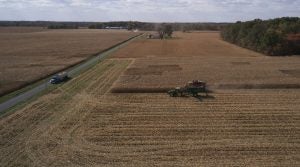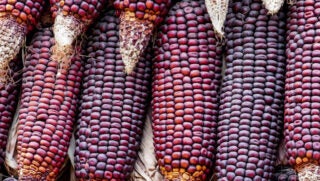It’s no secret that farmers and ranchers have been facing high prices at the pump alongside the rest of America, but U.S. food supply and security are quite literally driven by diesel. According to a new Market Intel Report by the American Farm Bureau Federation, the average U.S. on-highway price of diesel is $5.32 per gallon. While still 49 cents per gallon below June’s peak price, the average price of diesel is up $1.59 since last year.
On March 8, President Joe Biden announced a ban on U.S. imports of petroleum, coal, and natural gas, including crude oil and petroleum products from Russia in response to the further invasion of Ukraine. While Russia only accounts for 3 percent of crude oil imports, Russia accounted for 20 percent of U.S. imports of petroleum products in 2021. Petroleum products supplement crude oil in the refining process — specifically high-sulfur oils from Russia.

Times of the year such as planting and harvest increase fuel consumption by the U.S. farmer, but just how much fuel does a farm use per acre According to PennState, a cash grain farm using no-till and conventional fertilizer may use less than three gallons per acre to grow and harvest a crop of corn of soybeans. However, that doesn’t include trucking or any type of tillage.
In response to the ban, Zippy Duval, AFBF president sent a letter to Biden calling for the administration to bring more domestic supplies into place to reduce fuel costs to Americans. Duval wrote, ” Every input that arrives on our farms and ranches is transported by a diesel engine whether that is by boat or barge, rail or truck. Our crops are planted by diesel engines and harvested by diesel engines. High diesel prices are severely impacting our farmers and ranchers, causing increased costs to consumers, and adding to food insecurity.”

Meanwhile, diesel production capacity has decreased since 2019 by about 180,000 barrels per day, equivalent to 4 percent of current diesel production. The U.S. capacity to refine oil has declined in the past two years as plants shut down during the COVID-19 pandemic.
According to the AFBF, market and policy support for renewable diesel production would not only help to make the U.S. diesel market more energy independent but potentially shrink the gap between the price of diesel and gasoline.
“With roughly 25 days’ worth of diesel stocks and prices well over $5 per gallon, Farm Bureau also encourages your administration to explore all options, including removing any regulatory barriers that limit the supply, production, and distribution of diesel fuel. Farm Bureau is committed to working with partners in the private and public sectors, your administration, and Congress to address the current energy crisis” said Duvall in closing.


